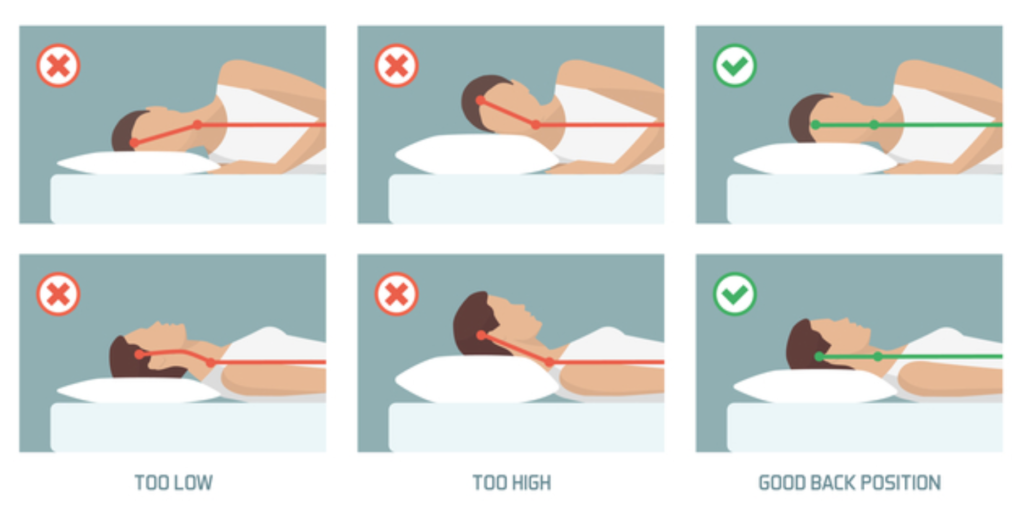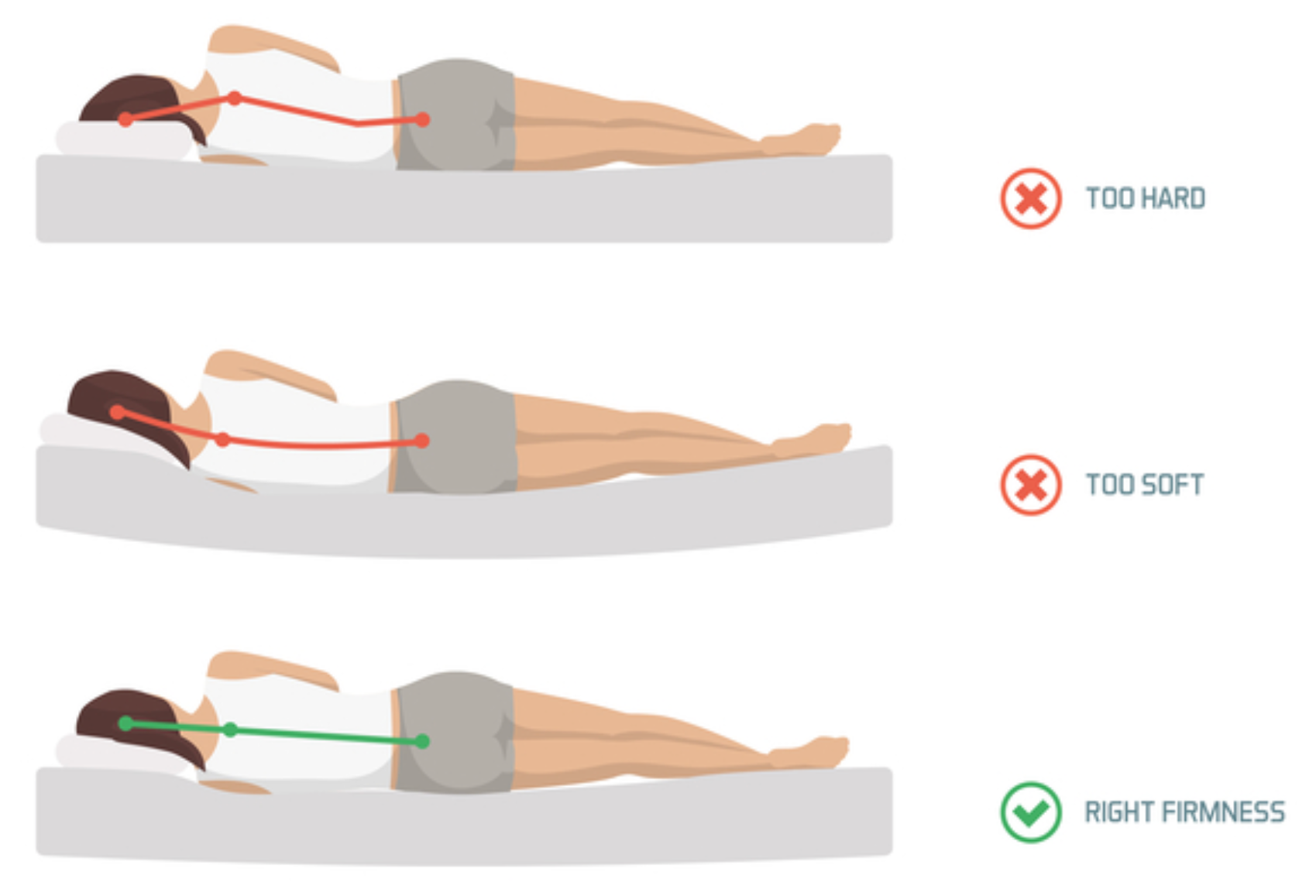“I need to improve my posture!” When you hear this statement, you might be thinking about how you sit or stand. What if we told you that you could improve your posture in your sleep! There are so many benefits from paying attention to your position during rest. Quality of sleep, vitality, and posture could all improve with these slight changes. So let’s jump into it.
How do you sleep?
Side:
- Side laying requires a firm, medium thickness pillow. This will take up the space between the outer aspect of your shoulder and the side of your head when you are lying down.
- This will reduce excessive bending in your cervical spine towards and/or away from the mattress. It will result in less neck stress and strain.
Supine (back):
- Back laying requires a pillow that is relatively thin. You can choose to purchase a neck pillow or lay flat with no pillow at all. A towel can be utilized to support the natural curve of your neck.
- When laying on your back, a pillow should promote a position which maintains a point of levelness at your forehead, nose, and chin. If your forehead or chin is too high, it will cause unusual curvature of the neck. This may worsen symptoms in existing conditions.
Prone (stomach):
- This is not recommended. Stomach sleeping results in hyper-rotation and extension in the cervical spine.

How does your mattress impact sleep posture?
Mattress firmness does play a role in your pillow choice. If you have a firm mattress, a softer pillow, like a down feather pillow, may be of benefit. If you have a soft mattress, a firm pillow, like memory foam, may be a good choice.

Have a questions for the Solveglobal team? Contact us here.






Leave A Comment